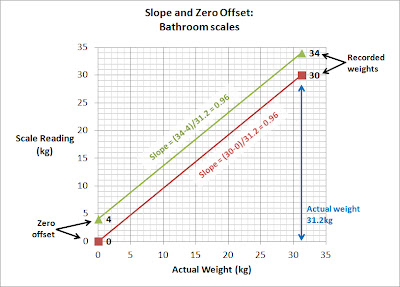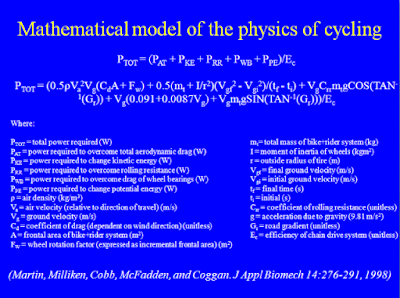Drafting in cycling is a term that refers to practice of riding in close proximity to another rider or riders ahead of them or riding behind other moving objects, such as a motor bike or other vehicle. Taking draft, riding in the slipstream, and keeping your nose out of the wind are some of the phrases used to describe this phenomenon. It even has a Wikipedia entry.
The fact that far less energy is required to ride at a given speed when behind another moving object than when you are the one pushing the wind is without dispute, and many have measured the benefits.
It's a tactic that bike racers make good use of, in order to save as much energy as possible during a race, so they can use that energy when it really matters, such as the final sprint. Often in racing it is those that are least fatigued that win, and is why teams send their workhorses to the front of the group to "do all the work". There is even an anecdotal report from Prof. Asker Jeukendrup of one professional cyclist completing a stage of the Tour de France with an average power of 98W. Now that's an impressive level of drafting skill.
In some cycling events though, drafting is akin to a bowler chucking a cricket ball down the wicket, it's just not cricket. It's against the rules to take draft in events such as individual time trials and in many forms of triathlon (e.g. Ironman) which are also solo competitor timed events. It is cheating. And when it happens it annoys the crap out of many people.
For a cycle racer, drafting is a skill, a craft to be learnt, developed and honed.
However, in time trials and non-draft triathlon, someone accused of illegal drafting usually also has their parentage questioned.
Of course there are rules that apply when two riders end up in close proximity, and usually it involves a minimum distance the rider behind must maintain, and/or move to another side of the road, and/or pass the other rider within a set amount of time.
The minimal distance in triathlon varies depending on the event, and can be 5, 7 or 12 metres. In cycling under UCI rules, the distance between riders must be at least 25 metres and 2 metres laterally, unless of course they are passing the rider ahead. And of course support vehicles and other vehicles (e.g. TV) in cycling must remain behind the rider (a minimum of 10 metres for support vehicles). It does get tricky in the biggest races though, with police motorbike escorts clearing the crowds sometimes providing unintentional wind assistance.
In road cycling time trials, the issue of riders flaunting the drafting rules (deliberately or otherwise) is not all that common as the number of competitors in any event is usually strictly limited and each rider commences their timed ride over the fixed course at specified time intervals designed to ensure most competitors don't end up in close proximity to another. It does happen of course, but nothing like to the extent it occurs in the sport of triathlon.
Triathlon however have set themselves up for an endemic drafting problem. It's a natural consequence of a mass participation event resulting in far more riders being on the course than there is room on the road to enable everyone to obey the rules without pretty much coming to a halt. Just go to any triathlon forum and monitor the number and tone of discussion threads on drafting and passing. It's normally treated with a level of discourse usually reserved for doping topics.
Well I'm not really intending to debate the merits or otherwise of such rules and their applicability or enforceability - but what I will do is to publish the results of an impromptu experiment to measure the impact on power of a type of drafting legally permitted in triathlon.
The outcome surprised me, and explains why the drafting rules create big problems and often result in heated exchanges between riders and officials.
The experiment
OK, so what did I find?
This is a chart tracing Rob's power and speed, with horizontal axis being distance. It's shown with 30-second averaging to make it easier to see what happened.
We can see Rob rode about 35km total, with three intervals of ~10km each, with a bit of warm up and short recovery between each interval. So on that basis I decided to examine each 10km interval in more detail. The speed and average power for each interval was a little different, which each being ~ 20W harder and 0.7 - 1km/h faster than the previous effort.
Upon closer examination, it was clear to me Rob's air resistance (apparent CdA*) varied during each 10km interval. Within each interval, there were four distinct sub-interval sections with relatively stable aerodynamics, each of approximately 2.5km in length. To see this properly requires re-plotting the data using a technique known as virtual elevation, which helps us make aerodynamic sense of what can appear to be quite noisy data. I'm not going to show those charts as there are too many, but I will summarise the results into three charts, one for each 10km interval.
In each summary of results chart I have indicated on the bottom axis where I think the start and end of each of those sub-interval sections was, and the columns show my estimated CdA for each of those sections. Note that the CdA numbers won't be absolutely correct since I am making some other global assumptions about Rob and environmental conditions, but what's important is the measured differences in apparent CdA. I may not have the absolute values exactly spot on, but the differences in the absolute values will be on the money. Here's the first summary chart:

Also shown, are horizontal lines, which are the average apparent-CdA for "drafting" (blue) and "leading" (red), as well as the difference in apparent CdA between each (the fat vertical double headed arrow).
So we can see that the average difference in apparent-CdA for draft vs non-draft in the first 10km interval was 0.035m^2.
Here's the chart summarising the second 10km interval:

which shows an average difference in apparent-CdA between drafting and non-drafting of 0.033m^2, which is similar but slightly less than the difference measured in the first 10km interval.
And the third 10km interval:

which again shows a drafting benefit, but now that benefit has been reduced somewhat to 0.026m^2. There is also a slight increase in non-draft CdA in this interval compared to the first two intervals.
So in summary, the gain by drafting the other rider was a reduction in apparent-CdA of:
Interval 2: 0.033m^2
Interval 3: 0.026m^2
In terms of energy benefit for for Rob when drafting over leading, when riding at 40km/h this equates to wattage savings of:
Interval 1: 29W
Interval 2: 27W
Interval 3: 21W
What's interesting is that the non-draft CdA values are pretty consistent across all runs (a little higher in third interval), but that the draft-CdA values in the third 10km interval had increased somewhat more, IOW the drafting benefit had been reduced for some reason. There can be several reasons for this, such as environmental condition changes, on bike position changes due to riding at higher power and/or fatigue (creeping forward on saddle for instance), change in equipment/clothing and so on.
After I had done the analysis, Rob then revealed all the details of what he actually did - these are his words in green, although I have re-ordered some paragraphs for clarity:
In all intervals I trailed on the first segment, then swapped to the front twice.
In all intervals I tried to hold the same aero position. This was very consistent on the first interval, but possibly less so on the final interval.
All intervals were the same draft distance +/- 0.3m, 12m front wheel to front wheel. A laser pointer was taped to the frame to aim at the back wheel of the rider in front for a 12m front wheel to front wheel distance. Rig checked after the session and laser was still accurate, so didn't move during the session.
The intervals got harder (3 x 10km E, M, H)
The wind went from dead calm to moderate on the H interval. Distinct head, tail and cross winds on interval 3 (the H one), possibly more than what Moorabbin airport recorded as there was a rain shower that came through with much stronger wind.
The other rider is small, ~65kg, on a very aero bike, in a good aero position. Probably 0.250m^2 or so CdA. If there was something smaller or more aero to draft off, it would be hard to find.
The BOM data for Moorabbin airport, 10km away approx was:
Date/Time EDT Tmp°C AppTmp°C DewPoint°C RelHum% Delta-T°C Wind PressQNH hPa Press MSL
hPa Rain since 9 am mm Dir Spd km/h Gust km/h Spd kts Gust kts -
08/06:00am 12.6 11.3 11.2 91 0.7 NNW 9 13 5 7 1010.6 1010.5 0.0
My weight and bike 95kg.
Crr previously measured many times on this velodrome at 0.0044.
Air density pretty consistent around 1.227.
Bike is TT (P3) with H3 front, H Jet Disc rear, eKoi helmet (no vents).
Track location is Carnegie Velodrome in Packer Park just near East Boundary Rd and North Road. 363m circuit.
Anyone suggesting there is no benefit at 12m is totally incorrect, even in head, cross and tail winds on interval 3 there was close to 20w difference - which is significant. When it is calmer, there is more benefit, which makes perfect sense.
There is also a high likelihood that there could be even more benefit that could be found from a bigger test rider in front, being 3rd or 4th wheel, or being closer than 12m.
A larger rider adhering to the 12-metre draft rule when following a single smaller rider at speeds of ~40km/h in calm conditions gained a benefit of ~27-30W reduction in power required, and ~20W saving in moderate cross winds.
It's not the only time I've done this - I used this blind analysis technique to spot things like a rider's bike position changing during an event, as well as assess rider's physiological capabilities in events such as team pursuits.
* I say an apparent-CdA, because when riding in a slipstream it's not Rob's actual CdA that changes so much, it's the air flow he is riding through that is changing. What these numbers represent is the equivalent impact of that beneficial air flow in both CdA and in wattage saving terms.





















